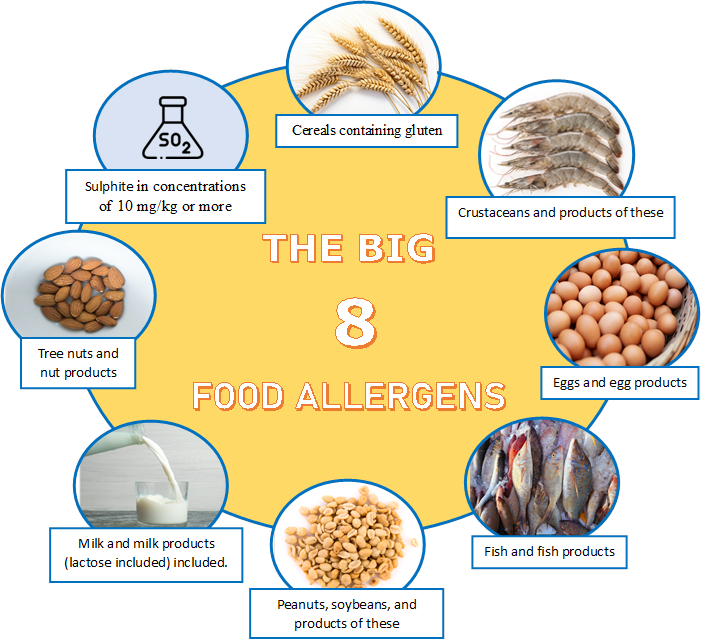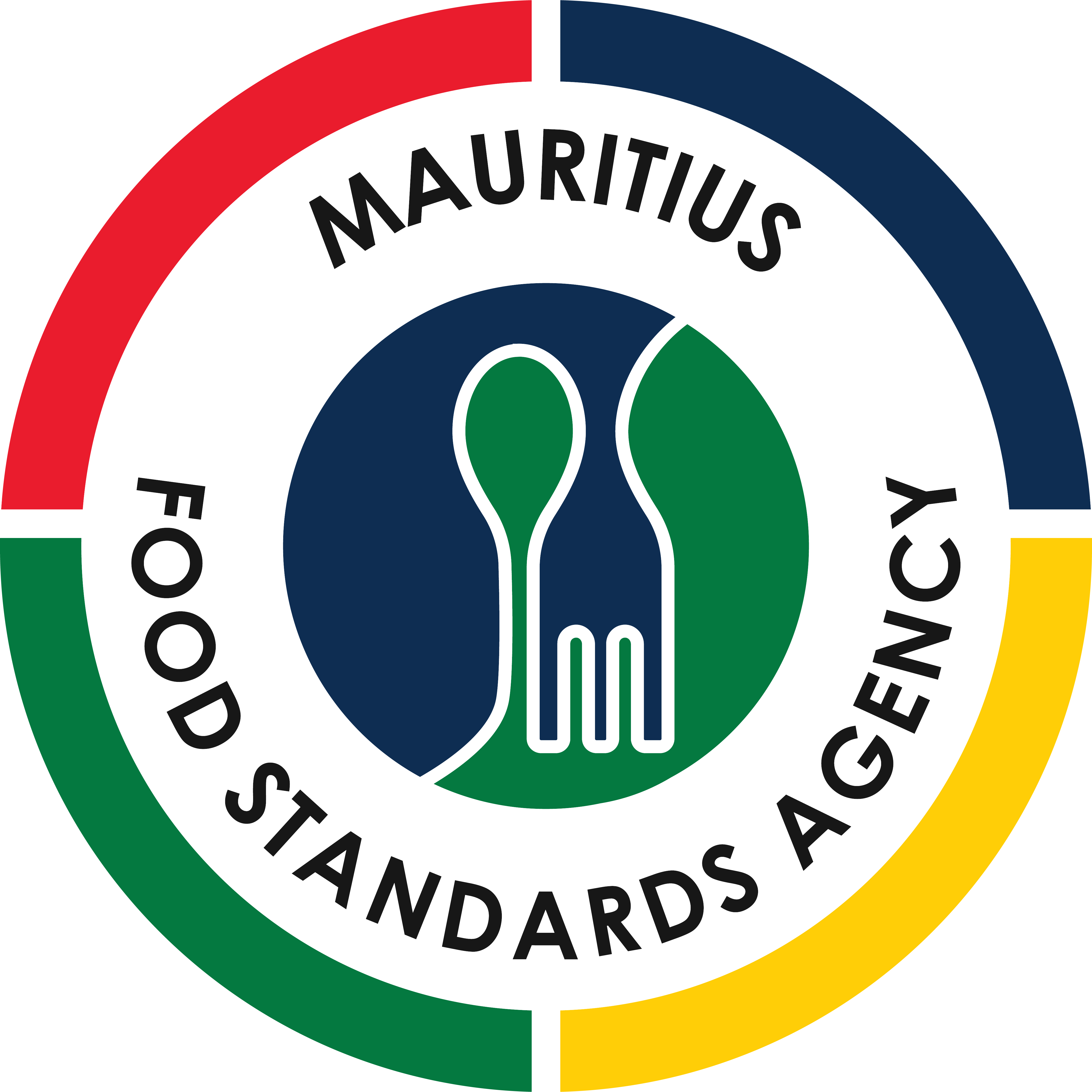What is a food allergen?
A food allergen is a substance in food that can cause an allergic reaction in some individuals. When a person with a food allergy consumes a particular allergen, their immune system reacts abnormally, treating the allergen as a harmful invader. This immune response can lead to various symptoms such as itching or swelling in the mouth, vomiting, diarrhoea, abdominal cramps and pain, hives or eczema, constriction of the throat, difficulty in breathing, and a decrease in blood pressure.
What are the common food allergens?
- Cereals containing gluten – Wheat, rye, barley, and oats are often found in foods containing flour, such as some types of baking powder, batter, breadcrumbs, bread, cakes, couscous, meat products, pasta, pastry, sauces, soups, and fried foods which are dusted with flour.
- Crustaceans and products of these – Crab, lobster, prawns, shrimp, and their products.
- Eggs and egg products – Eggs are used in cakes, some meat products, mayonnaise, mousses, pasta, quiche, sauces and pastries or foods brushed or glazed with egg.
- Fish and fish products – Fish is often added to fish sauces, pizzas, relishes, salad dressings, and stock cubes.
- Peanuts, soybeans, and products of these – Peanuts can be found in biscuits, cakes, curries, desserts, sauces as well as in peanut oil and peanut butter. Soybeans are often found in tofu, desserts, ice cream, meat products, sauces, and meat substitute vegetarian products.
- Milk and milk products (lactose included) – Milk is a common ingredient in butter, cheese, cream, milk powders and yoghurt. It can also be found in foods brushed or glazed with milk, and in powdered soups and sauces.
- Tree nuts and nut products – Not to be mistaken with peanuts which are legumes growing underground. Tree nuts and nuts grow on trees such as cashews, almonds, and hazelnuts. Some applications include breads, biscuits, crackers, desserts, nut powders, stir-fried dishes, ice cream, marzipan (almond paste), as well as nut oils, butter, and sauces.
- Sulphite in concentrations of 10 mg/kg or more – This is an ingredient often used in dried fruit such as raisins, dried apricots, and prunes. Sulphur dioxides are also added to meat products, soft drinks, vegetables as well as in wine and beer. Individuals with asthma face an elevated risk of experiencing a reaction to sulphur dioxide.

What are the safety guidelines for dealing with allergens?
Safe handling allergens is crucial as even trace amounts can trigger allergic reactions. Below are some safety guidelines for dealing with allergens.
- Ensure thorough washing and sanitization of all surfaces that meet food before initiating the preparation of a new item.
- Refrain from using the same utensil or glove when serving foods that contain the big 8 allergens and other food items.
- Adhere strictly to established handwashing procedures and changing gloves as per the established policy.
- Adhere precisely to recipes and menus and abstain from making any substitutions.
How can a consumer know that a food contains an allergen?
In the Food Regulations 2024, a declaration of the presence of the major eight allergens in a food is required through a statement on the food label. Therefore, consumers should carefully examine food labels and pay special attention to identify and recognize potential allergens in the product.
Source: FAO & WHO
